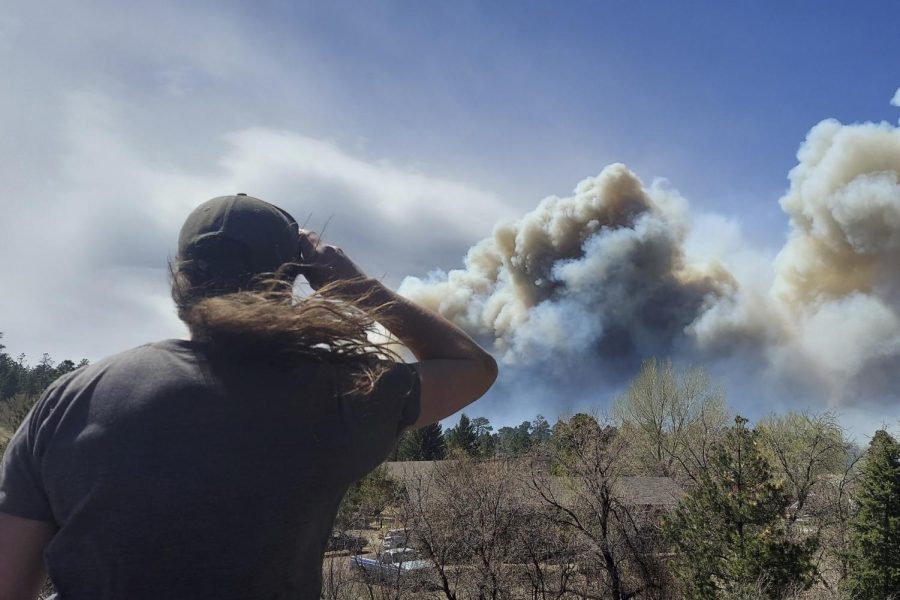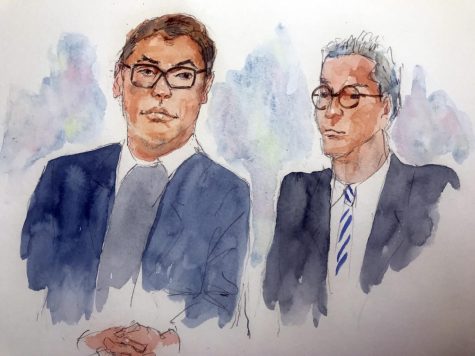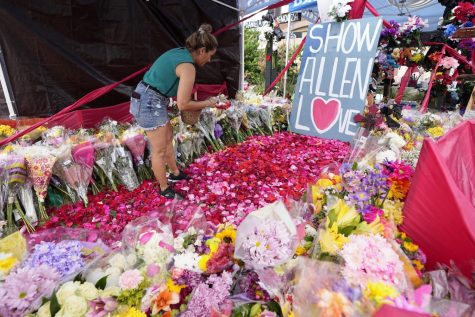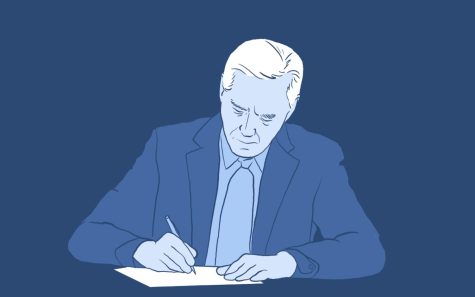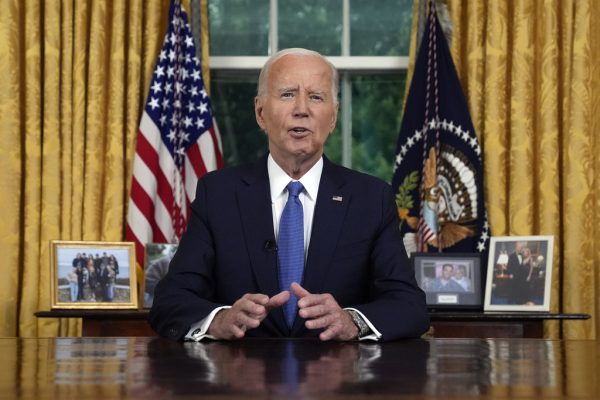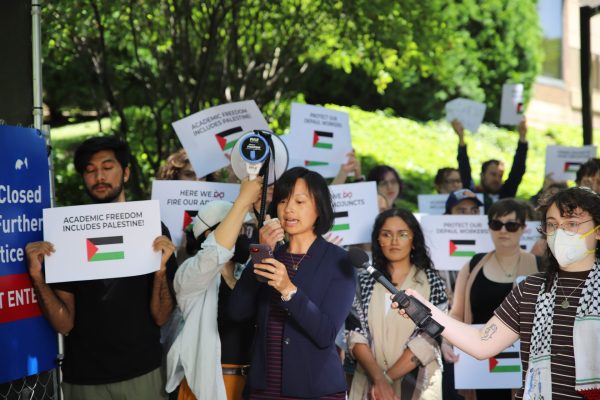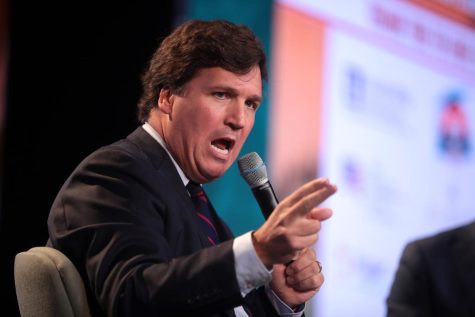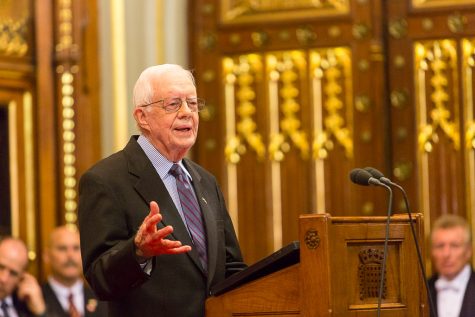Over 137 million in US breathing dangerous air
Smoke from a wind-whipped wildfire rises above neighborhoods on the outskirts of Flagstaff, Arizona, on Tuesday, April 19, 2022. (Sean Golightly, Arizona Daily Sun via AP)
Over 40 percent of the United States — more than 137 million Americans — live in places where air pollution levels make the air too dangerous to breathe, according to a new study. And as vehicles and industry continue to pump out pollution, climate change-induced heat and wildfires are only adding to the issue.
Every year, the American Lung Association releases its State of the Air report, a comprehensive evaluation of the nation’s air quality on a local county scale. This year’s report, released April 21, found that 63 million Americans live in counties with dangerous levels of daily particulate matter pollution — an increase of nearly nine million from last year’s report. On top of this, about 20.3 million people were found to live in counties where year-round particle pollution levels fail to meet the national air quality standard.
“When an old diesel bus or truck goes by and a big plume of black smoke comes out the tailpipe, you’re witnessing the creation of these primary pollutants of aerosols,” said Mark Potosnak, a professor and department chair of environmental science and studies at DePaul. “A lot of [particulate matter also comes from] burning fossil fuels in an unclean way. A big one here is the diesel trains — all the trains that run around the city, including the Metra, but also the freight rail — you get a lot of emissions from those.”
For particulates to be defined as fine particles, they must have a diameter of 2.5 microns in diameter. For scale, a single human hair is typically between 60 and 80 microns in diameter. While these fine particles’ size may make them seem harmless, it’s their size that allows them to wreak havoc on the human body.
“Bigger particles get caught in your nose hairs or in mucus in your nose and throat, and generally, they don’t make it into your lungs,” said Brian Urbaszewski, director of environmental health programs at the Respiratory Health Association. “The problem with these really small particles is that they bypass all those filters in your body. They tend to get into your lungs and into the deepest portions of your lungs, where they can also get into the bloodstream, where they’re associated with a lot of health issues.”
Additionally, the study found that about three out of eight Americans — over 122 million people — live in counties with dangerous levels of ozone pollution.
While ozone in Earth’s stratosphere protects the planet from harmful rays emitted by the sun, it’s also toxic, and when it’s in the lower sections of the atmosphere, it can damage the respiratory system if inhaled.
“[Ozone is] extremely reactive,” said Richard Jackson, a pediatrician and professor emeritus at UCLA’s Institute of the Environment and Sustainability. “If it hits your nose and you’re breathing it, you get burning in your nose. If you get it into your lungs, it irritates your lungs and causes bronchitis. And if you get enough of it, it begins to cause chronic lung disease.”
Ozone isn’t typically emitted by most factories or vehicles, instead it’s formed in the atmosphere through the release of other chemical byproducts that react with one another under sunlight.
“You’re putting a lot of ingredients up into the air in a big brown cloud, and that cloud drifts over the course of a day,” Urbaszewski said. “Meanwhile, sunshine is beating down on all those ingredients. Ozone is made through a chemical reaction, so because you put up the ingredients early, they have sunshine acting on them for many, many hours. And so, where you find the highest ozone readings on air quality monitors on the ground is wherever that cloud drifts over the course of the day.”
The State of the Air report notes that climate change has played a significant role in exacerbating the nation’s poor air quality in two major ways. For one, higher temperatures over longer periods of time have allowed for higher quantities of ozone to form in the air.
“Ozone formation is dependent on temperature,” Urbaszewski said. “The hotter it is, the more energy there is and the faster the chemical reaction runs that makes the ozone. So if you get longer, hotter summers, you’re most likely going to get more ozone.”
Secondly, climate change-induced heat and drought have increased the frequency and severity of wildfires across the Western U.S., releasing an excess of particulate matter into the air as a result. According to the study, all but one of the 25 worst cities for daily particle pollution are located in the West, largely driven by the area’s uptick in wildfires.
“We woke up in September of 2020 with the sky as red as a rose and air quality terrible,” Jackson said. “We’ve had many days like that with the fires out here.”
These fires don’t just impact the West’s air quality, though — some have recently been so severe that their impacts have been felt across the country.
“We’ve had fires in British Columbia and California affecting air quality in Chicago and downstate,” Urbaszewski said. “Fairly small urban communities have had unhealthy air pollution levels largely caused by wildfires hundreds, if not thousands, of miles away. Those fires are so massive and producing so much smoke that goes so high into the atmosphere that it travels on the jet stream a long way.”
Additionally, the study found stark inequalities in air pollution along racial lines — about 72 million people of color live in counties with at least one failing grade for ozone, daily particle or annual particle pollution. Furthermore, over 14 million people of color live in counties receiving failing grades on all three measures — a rate 3.6 times higher than that of white people.
“Part of the trend is because there’s more people of color in cities and air quality is poorer in cities, so that does explain some part of it,” Potosnak said. “But even within the city, it’s stratified by race.”
Potosnak notes that Chicago’s air quality serves as a strong example of this respiratory inequality.
“Part of it’s transportation,” he said. “The big railyards where all those cross-continental trains switch, they’re all located on the South and West Sides of Chicago. All the wealthy and more white people don’t live next to those railyards.”
Additionally, Potosnak noted disparities in industrial regions as contributing factors.
“Right here in Lincoln Park about 10 years ago, there was one steel mill left along the river called Finkl Steel,” he said. “It was noted because it was in a very dense urban area, and [the location] was closed up, but they moved it to a largely Black and Latino neighborhood on the Southeast Side of Chicago.”
While poor air quality continues to impact the lives of millions of Americans, a number of mitigation efforts have been proposed.
“One of the things we’ve been pushing for is to get Gov. Pritzker to sign onto an agreement that 17 other states have signed onto, which sets a goal of having 30 percent of new medium- and heavy-duty vehicles sold be zero emission by 2030, and that 100 percent of [these] new vehicles be sold in 2050 would have to be zero emission,” Urbaszewski said.
On a federal scale, November’s Bipartisan Infrastructure Bill contains a number of remedies for poor air quality as well.
“One tiny stream of it is going to be for electric school buses,” Urbaszewski said. “There’s money in that infrastructure bill for transit, so it may help CTA and PACE buy more electric buses. There’s money in there for electric vehicle charging stations — Illinois DOT is going to get almost $150 million to build EV charging stations along highway networks over the next several years.”
Individuals can protect themselves from air pollution by monitoring their local air quality and avoiding exercise on bad air days, as well as switching car vents to recirculate air when driving on busy roads. However, Urbaszewski notes that unless systemic changes are made, there’s not much that can be done on a personal scale to mitigate the issue.
“Part of the challenge of air pollution is that there’s not a lot you can do to protect yourself from a health threat that’s essentially everywhere, that you can’t avoid,” he said.


